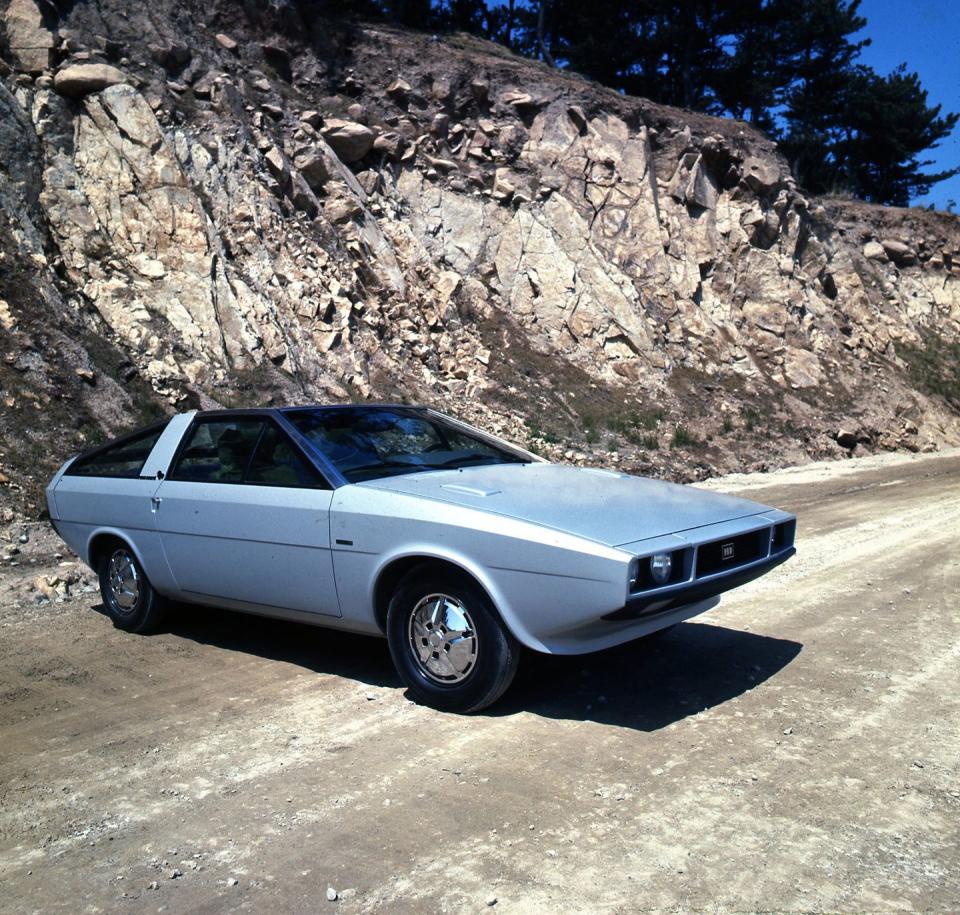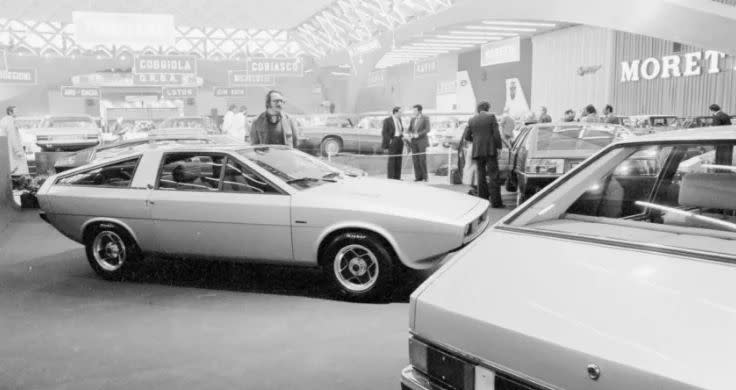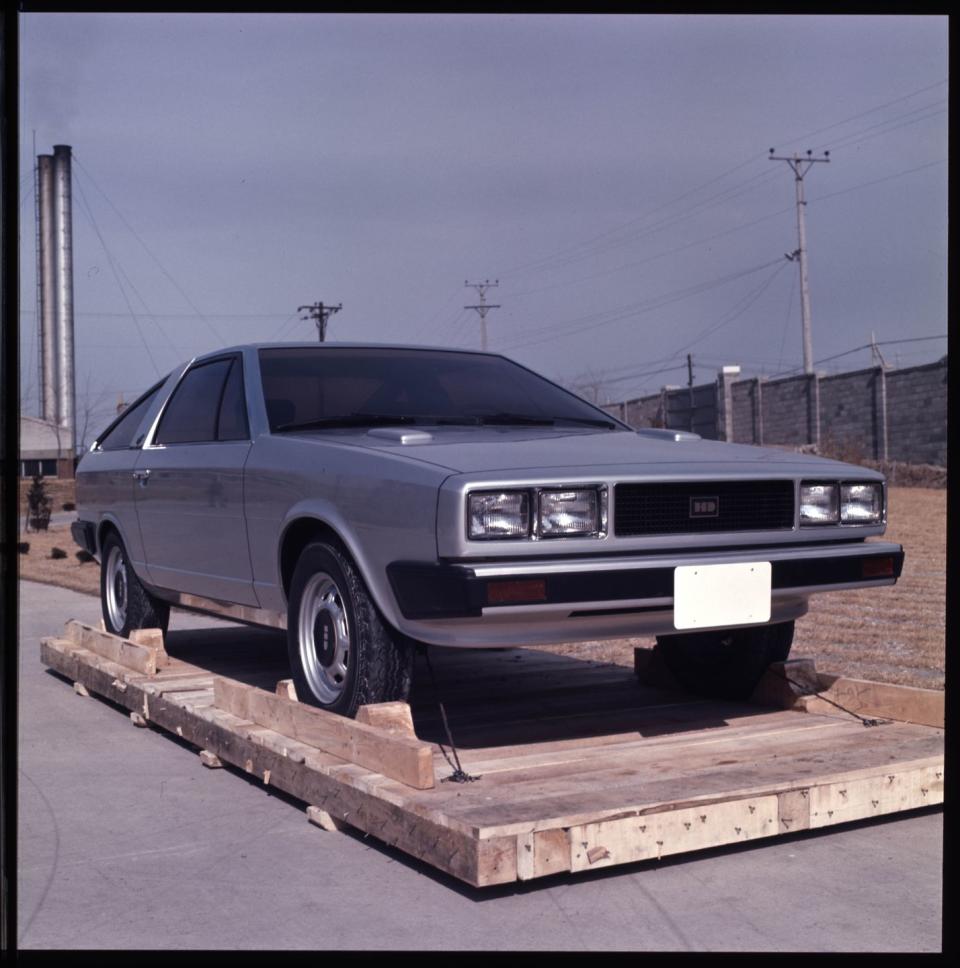Hyundai and Legendary Designer Giugiaro Collaborate on Rebirth of a Classic Concept Car

Every car brand has an origin story, although some are more glamorous than others. Until recently, Hyundai seemed to have little regard for its early history. The company preferred, understandably, to concentrate on the growing success of its present and future. That's some success: Hyundai Motor Group was the world's fourth-biggest automaker by volume last year, producing more vehicles than Stellantis or General Motors.
But now Hyundai is taking more pride in its humble origins. Design boss Sangyup Lee cited the company's first car, the 1974 Pony, as the inspiration for many of the themes of the Ioniq 5 EV. He has also acknowledged the similar debt that the spectacular fuel-cell "technology demonstrator" N Vision 74 owes to the concept version of the the same Pony that Giorgetto Giugiaro, then working for Italdesign, created in 1974.
But beyond photographs, almost nothing of the original Pony Coupe concept survived. The original show car is lost and presumed long scrapped, and there weren't any detailed engineering drawings to be found in the archive. If Hyundai wanted a Pony Coupe concept, it would have to build one.

Now, that is exactly what is happening. Giugiaro, now 84 years old but still working hard, will supervise the creation of an exact re-creation, as close as possible to the mislaid original. We will see it next year.
Hyundai Motor Company was founded in 1968 but started out making somebody else's car. Its first product was a Korean version of the Ford Cortina, a compact sedan from the British market. The larger and slightly grander German-market Ford 20M was later added to the portfolio, and Hyundai continued to build Fords under license into the 1980s.
But Hyundai was determined to become an automaker in its own right. In 1973 it recruited George Turnbull, a former British Leyland executive, to lead a team that would create an all-new car. He brought a group of engineers from the U.K. to help create both a new factory and the model for it to build. The prospect of generous tax-free salaries meant there was no shortage of talented applicants, and this team included well-known race car designer John Crossthwaite.
At this point the official story diverges from the one from period reports. Hyundai is keen to highlight the newness of the rear-wheel-drive Pony, including its exterior design that had been contracted to Giugiaro's Italdesign in Turin. The reality of South Korea's fledgling supply infrastructure meant much of the Pony actually came from elsewhere. Underneath it was closely related to the contemporary Mitsubishi Lancer, sharing its engine, gearbox, and rear axle. Many other components, including the brakes, the instrument cluster, and the steering rack, came from Britain.
Hyundai wanted a traditional design for its first car, which Giugiaro duly delivered. The boxy Pony had a utilitarian honesty and the modest excitement of a fastback rear. But no part of it could be called radical or exciting, which is why Hyundai soon decided it wanted a more glamourous model to display next to the four-door at auto shows to help raise interest.

Fortunately, Italdesign had already used the Pony floorpan as the basis for an elegant coupe that Giugiaro had created to highlight both his and his company's talents. This was called the Asso di Fiori—meaning Ace of Clubs in Italian—and was set to be shown on the Italdesign stand at the 1974 Turin auto show. At the last moment Hyundai decided to officially adopt it and call it the Pony Coupe. (Italdesign then recycled the Asso di Fiori name for a later coupe concept, which became the Isuzu Impulse.)
Beneath its hastily applied Hyundai branding, the Pony Coupe was sleek and stylish but bore few obvious similarities to its four-door sibling. The mid-1970s were Giugiaro's busiest and most productive years, and the coupe was part of a run of spectacular two-doors that included the Maserati Merak and Boomerang concept, the Lotus Esprit, the Volkswagen Scirocco, and the Alfa Romeo Alfetta GTV. Elements from all of those are seen in the Hyundai, but it also featured plenty of innovation including a glazed top-hinged trunklid that technically made it a hatchback. The cabin also featured the zany combination of a single-spoke steering wheel, up-and-down linear instruments—with red markers moving against fixed scales—and a small, raised gear shifter.
While the Pony Coupe concept looked great, it was clearly some way from production reality—especially for a company that had only just started building its first model. Sangyup Lee, who has spent time tracing Hyundai's early history through the corporate archives, said that the company soon realized, as he delicately put it, that “the Pony engine and chassis would struggle to give a credible level of performance.” The Coupe concept appeared at various auto shows and gained different wheels and a partial repaint over time. Then it disappeared, likely scrapped but possibly still sitting lost in a storage facility somewhere in Korea.
Yet Hyundai was obviously keen to turn it into a purchasable car. While researching the history of the concept, Hyundai discovered a single image of a different car sitting on a storage pallet. This seemed to be a production version of the Coupe that combined a similar roofline and side graphic with a more conventional quad-headlight front end. Beyond flatter sides, and the lack of gullwing doors, it bore an unmistakeable similarity to another of Italdesign's more famous designs from slightly later, the DeLorean DMC-12. Like an efficient craftsman, Giugiaro would clearly recycle good ideas rather than risk losing them.

Giugiaro Returns
Nearly 50 years after his first visit to what was then Hyundai's brand-new plant in Ulsan, Giorgetto Giugiaro returns for the official announcement of the new Coupe concept. This will be built by the GFG Style company in Turin that Giugiaro owns with his son, Fabrizio. Work has already begun, despite the lack of original documentation, and we can expect to see the finished car next year. It represents a considerable amount of both cost and effort to recreate a car that only automotive historians remember, but one the company clearly thinks is important.
"Giugiaro was Hyundai's first designer," Hyundai president Luc Donckerwolke told C/D at the announcement ceremony in Korea. "That is a connection to be celebrated. But [the Coupe concept] also proves that Hyundai was always thinking about making more interesting and more desirable cars."
Donckerwolke is a hugely experienced car designer himself, formerly Hyundai's chief creative officer, who worked closely with Giugiaro during his time at Lamborghini. He also disclosed that future collaborations remain possible, especially as some of the other Giugiaro-designed Hyundai models from the 1970s and 80s may well serve as inspiration for other future products and concepts.

Giugiaro himself is clearly happy that one of his lesser-known pieces of work is being reborn, but he is also quick to emphasize that the Pony Coupe wasn't just a precursor to the more famous DeLorean.
"It does have a lot of similarities with the DMC-12," he told C/D, speaking through an interpreter, "but just because it has similarities does not make it the same—what was important was to strike a balance.
"Making proportions in a well-balanced manner is always important, so some aspects might be repetitive,” he said, “but even if we have similar faces when we create a product, there are lots of differences and similarity isn't the same thing as being equal.”
Perhaps it is inevitable that with as many highlights in his portfolio, the Maestro himself will always prefer to talk about distinctions rather than likenesses.
He did reveal another fascinating detail from the period, that Volkswagen was planning to use the Pony name for the hatchback that he was styling for them at the same time he was working on Hyundai's first car. But the Korean model made it to market first and stole the name, so the Volkswagen had to rapidly be rechristened as the Golf.
You Might Also Like

 Yahoo Autos
Yahoo Autos 